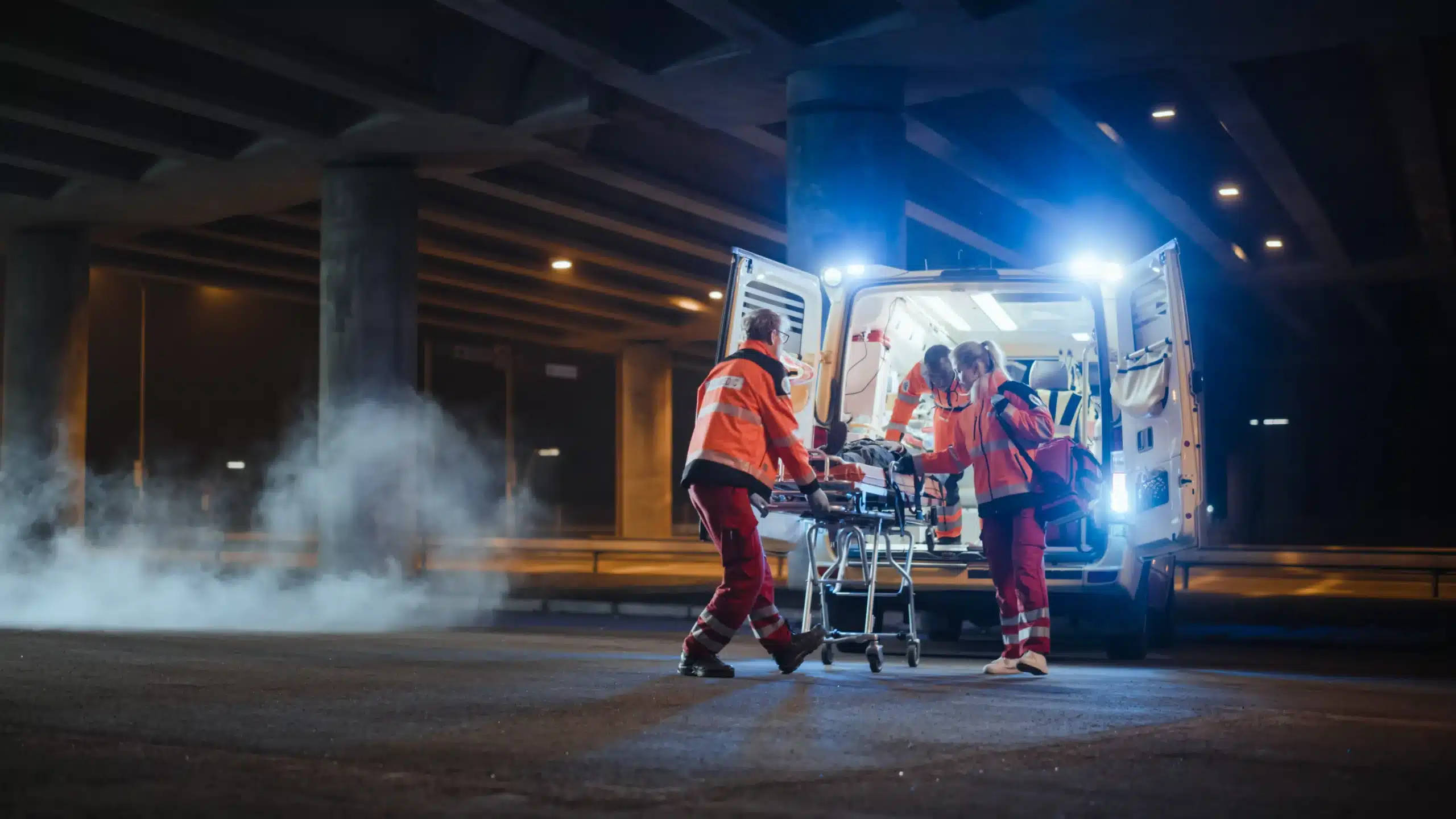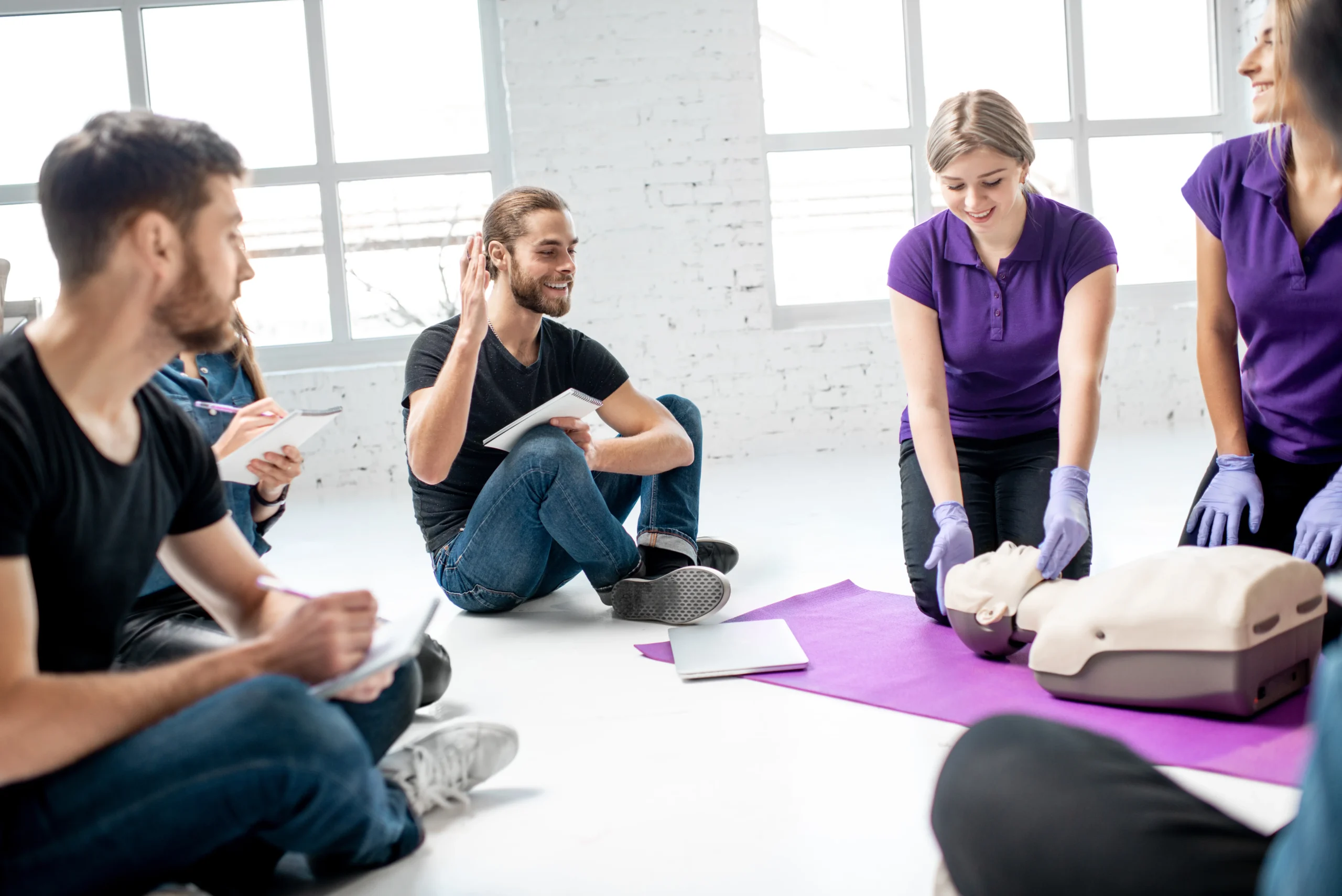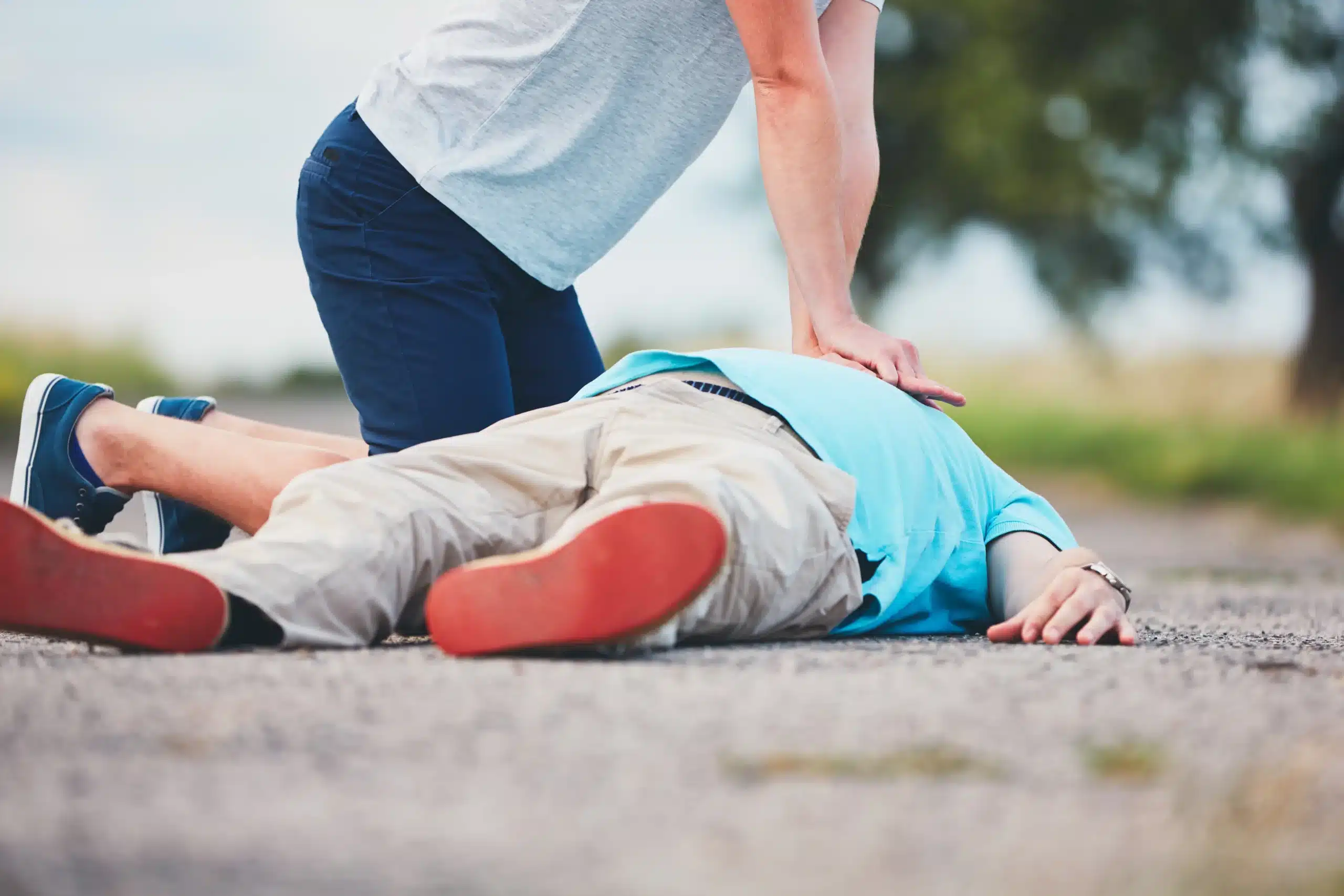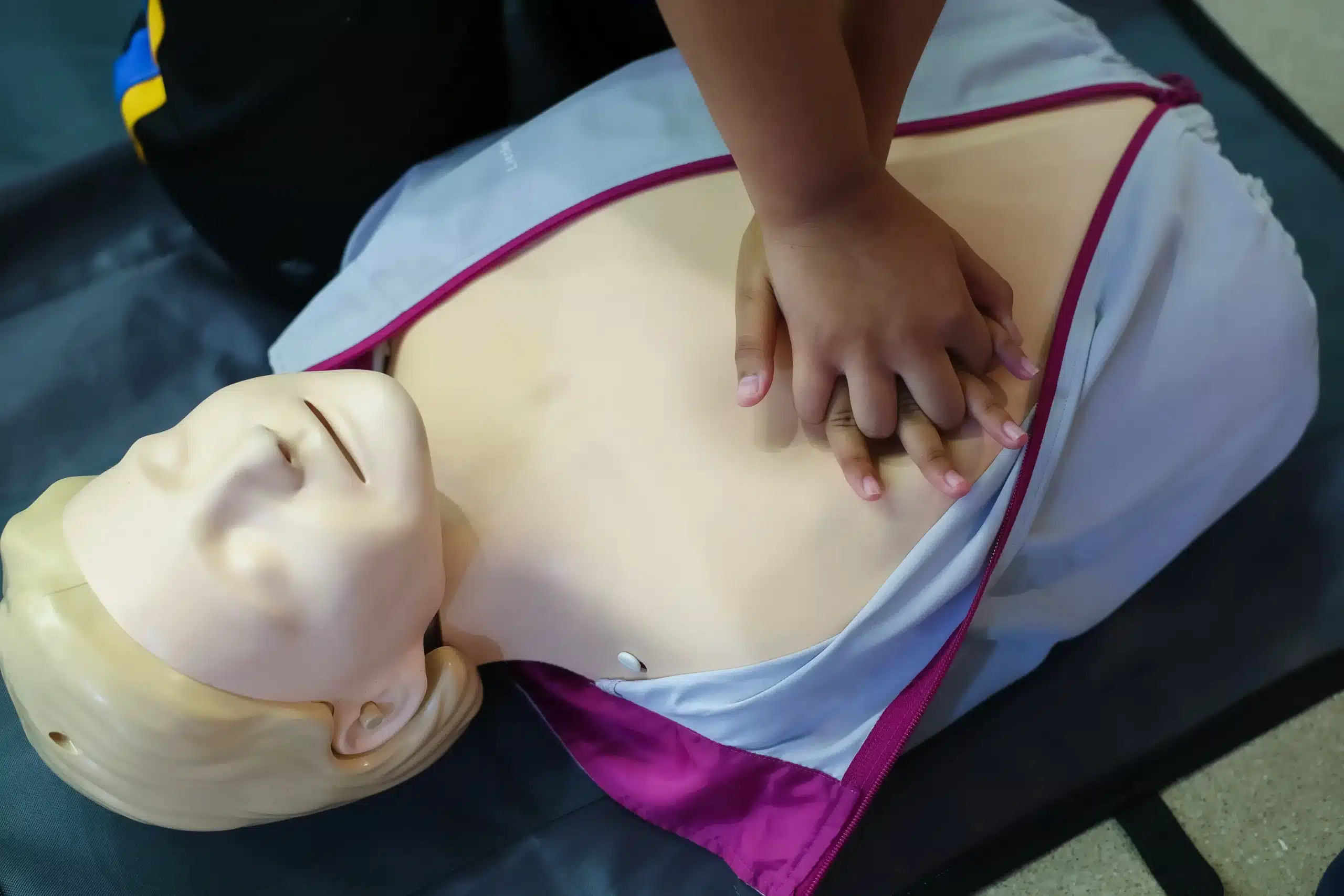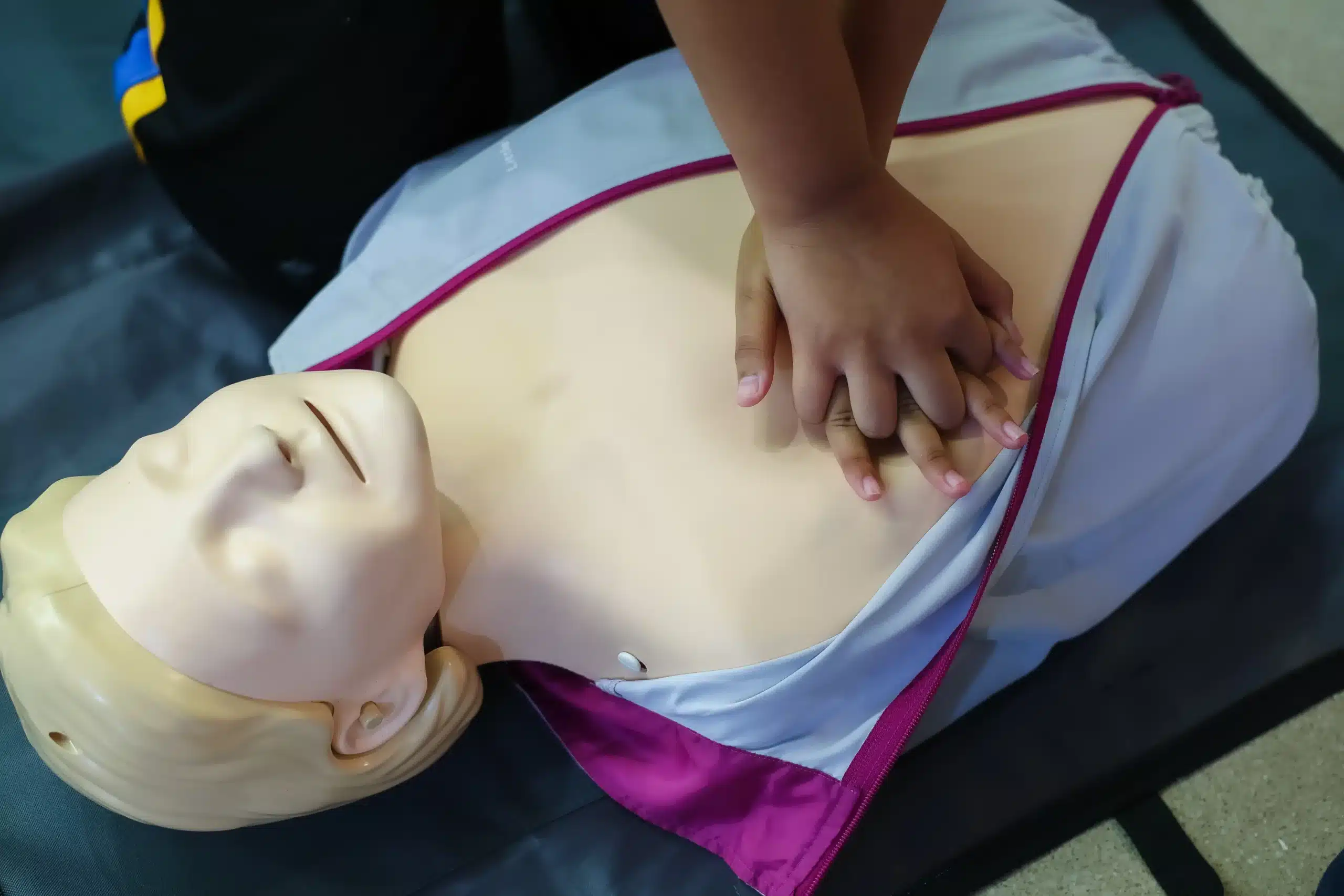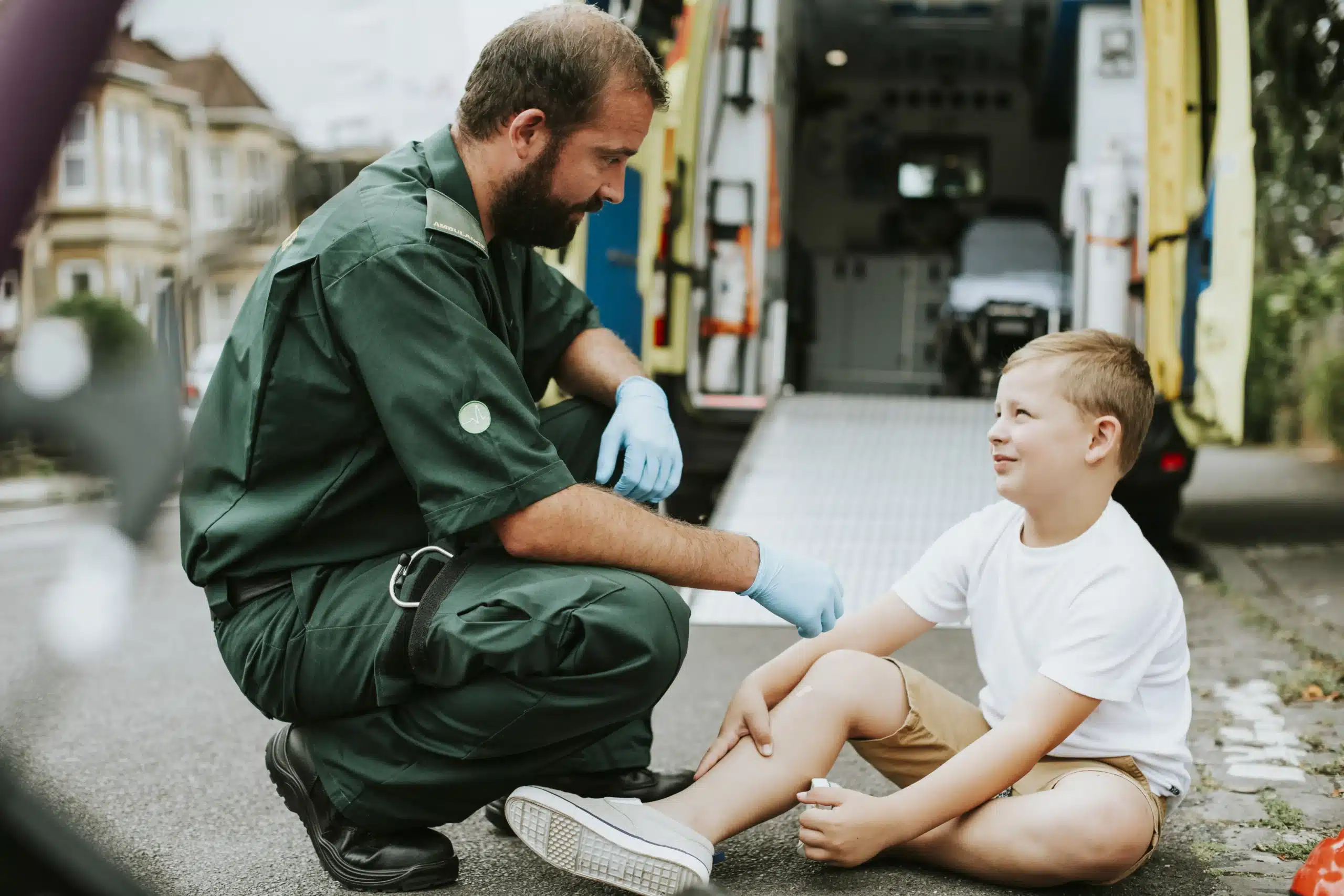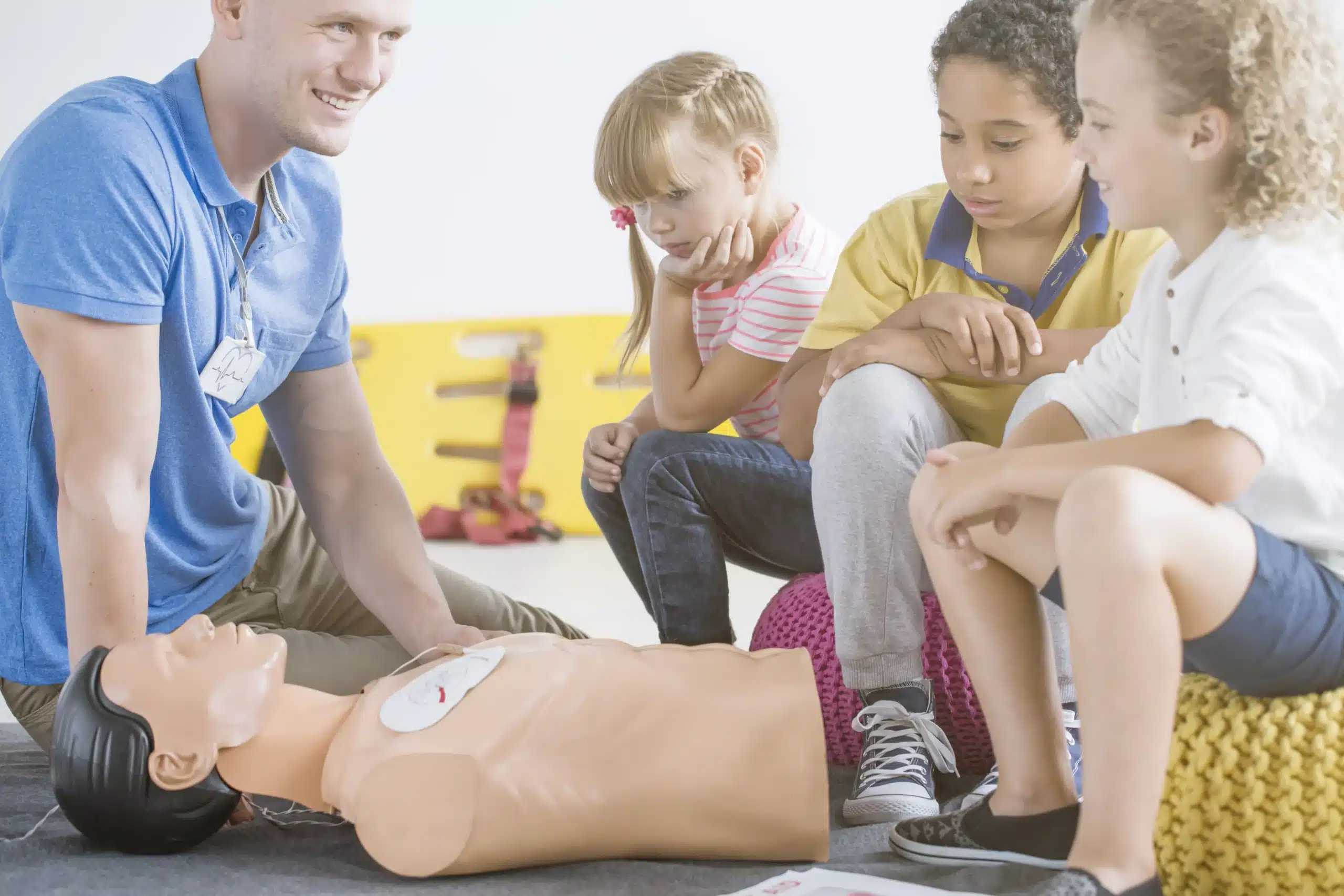Life is full of surprises, and not all of them are pleasant. Knowing how to handle a medical emergency can bring peace of mind and potentially save a life. This comprehensive guide explores the world of first aid training, explaining the different types of courses, the certification process, and how to find “first-aid classes near me.” We’ll also delve into the benefits of first aid training, from career advancement to personal safety, and provide practical tips for preparing for your class and staying up-to-date with your skills. Empower yourself with the knowledge and confidence to respond effectively in any medical situation.
Key Takeaways
- First aid skills empower you to help: Learning first aid builds confidence and equips you to handle emergencies effectively, from everyday injuries to life-threatening situations. Find a course that suits your lifestyle, whether it’s basic first aid, CPR/AED training, or specialized instruction.
- Do your research when selecting a class: Consider your schedule, learning preferences (online or in-person), and specific needs when choosing a first aid course. Prioritize training from certified instructors affiliated with reputable organizations like the American Red Cross or American Heart Association.
- Stay sharp and practice regularly: Like any skill, first aid requires upkeep. Refresh your knowledge and skills through regular practice and renewal courses. Integrate first aid principles into your daily routine to build confidence and ensure you’re always prepared.
What is First Aid Training?
First aid training gives you the skills to handle medical emergencies. These courses cover a range of situations, from minor injuries to life-threatening conditions. You’ll learn how to assess a scene, respond to common medical issues, and perform essential techniques like CPR and using an AED. It’s about providing immediate care until professional medical help arrives. Safety Training Seminars offers a comfortable learning environment for developing these important skills. We know that having the confidence to act quickly can make all the difference. Our courses are designed to be low-stress and empower you to handle emergencies effectively. First aid training is for everyone, regardless of your medical background. It’s about equipping yourself with the tools to help others in need and promote a safer community. Check out our group discounts for CPR and first aid classes to learn more.
Types of First Aid Classes
Knowing which first-aid course fits your needs can feel overwhelming with so many options. This section breaks down common first-aid class types to help you choose the right one.
Basic First Aid
Basic first-aid training equips you with essential lifesaving skills for everyday emergencies. You’ll learn how to assess a situation, control bleeding, manage burns, care for sprains, and handle other common injuries. These classes offer a supportive learning environment, perfect for anyone new to first aid or wanting a refresher. Basic first aid is a smart starting point if you’re unsure which class to take. It’s also a great option for community groups, families, or workplace training. For more information on basic first aid and other safety training services, visit Safety First Seminars.
CPR and AED Training
CPR and AED training teaches you how to respond to cardiac emergencies. You’ll learn adult, child, and infant CPR, how to use an automated external defibrillator (AED), and basic first aid. These classes follow guidelines from organizations like the American Heart Association. CPR/AED certification is often required for healthcare providers, teachers, coaches, and childcare professionals. Even if it’s not mandatory for your job, learning CPR and how to use an AED can empower you to save a life. Consider taking a combined CPR/AED and first-aid class to become well-rounded in emergency response. Petaluma CPR Classes offers American Heart Association CPR/AED training to help you gain these essential skills. For additional details on CPR and AED training, visit Safety First Seminars.
Specialized Courses
Beyond basic and CPR/AED training, specialized first-aid courses cater to specific industries and needs. These might include wilderness first aid, pediatric first aid, or emergency response training for workplaces. For example, if you’re a teacher, a pediatric first-aid course would be beneficial. If you enjoy hiking or camping, wilderness first aid could be invaluable. These courses provide advanced skills and knowledge to handle unique situations. Look for programs from reputable providers like the Health & Safety Institute, or check with local community organizations for offerings. Safety Seminars – First Aid Ed offers more information on specialized first aid courses.
Find First Aid Classes Near You
So, you’re ready to learn first aid? Great! Finding the right class is easier than you think. Here’s how to locate first aid training in your area:
Online Search Strategies
Start with a simple online search. Type “first aid classes near me” into Google, or get specific with searches like “CPR certification Petaluma” or “first aid training Rohnert Park.” National organizations like the American Red Cross and the American Heart Association also offer course listings and online search tools to pinpoint classes by location and type.
Check Local Resources
Think local! Your community likely has resources offering first aid training. Check with your local fire department, community centers, hospitals, or even colleges like Santa Rosa Junior College. These organizations often host classes or can point you toward qualified instructors. For businesses in Petaluma, Rohnert Park, and Novato, Safety Training Seminars offers a variety of courses, including CPR, ACLS, and PALS certification.
Evaluate Provider Credentials
Not all first aid courses are created equal. Before signing up, do some research on the provider. Look for instructors certified by reputable organizations like the American Heart Association or the American Red Cross. Check reviews and testimonials to understand the quality of instruction. Also, consider factors like class size, location, and schedule to find the best fit. For affordable options, Safety Training Seminars offers a low price guarantee and discounts for group classes, which can be a great option for businesses.
Cost of First Aid Training
Knowing the cost of first aid training is an important step in choosing the right class. Let’s break down average prices, potential discounts, and ways to find financial assistance.
Average Prices
First aid training costs vary depending on several factors. Course type, location, and whether you need initial certification or recertification all play a role. For example, CPR/First Aid recertification at Valdosta State University is $80 for students, $85 for Student Recreation Center members, and $95 for non-members. This example demonstrates how prices can differ. Always check with your chosen provider for their specific pricing. Many training centers list prices directly on their websites. Our low price guarantee ensures you’re getting the best value for your training.
Discounts and Promotions
Look for discounts and promotions to make training more affordable. Organizations like the American Red Cross often have deals on training materials and other emergency preparedness items. A quick online search can often reveal current promotions, like free shipping or percentage discounts. These offers can help offset the overall cost of your training. We also offer discounts for group classes, making it a cost-effective option for businesses and organizations.
Financial Assistance
If cost is a barrier, explore financial assistance options. Community programs, like CERT (Community Emergency Response Team), sometimes include first aid training as part of their curriculum. Contact your local or county Emergency Management Office to learn about these programs. Local fire departments are another great resource and frequently offer free CPR, AED, and first aid courses. Check their websites or give them a call to find upcoming classes. Don’t let cost prevent you from getting this important training—there are resources available to help.
Understand the Certification Process
What Happens During Training
First-aid training programs give you the knowledge and hands-on practice you’ll need in an emergency. These courses typically combine theoretical learning with practical skills development. For example, one study found that participants without medical backgrounds completed an 18-hour basic first-aid course. This blend of classroom instruction and hands-on practice helps you confidently apply your skills under pressure. Throughout the training, you’ll likely participate in various simulations and scenarios, allowing you to practice techniques in a safe environment. Many programs also incorporate assessments, such as skills tests before and after training, and even follow-up evaluations at six months and one year to gauge knowledge retention. This ongoing evaluation reinforces learning and ensures you maintain proficiency. At Safety Training Seminars, our courses follow American Heart Association guidelines, giving you the most up-to-date training available.
Certification Renewal
Your first-aid certification, like most CPR certifications, is typically valid for two years. To stay certified and maintain your skills, take a renewal course before it expires. Renewal courses refresh your knowledge and introduce any updated guidelines or techniques. This ensures you’re always prepared to provide effective assistance in an emergency. Organizations like the Red Cross offer these specialized renewal courses, often tailored to specific professions like childcare or education. Check with your certifying organization or Safety Training Seminars for information on renewal requirements and available courses in your area, including Petaluma, Rohnert Park, and Novato. Staying current with your certification demonstrates your commitment to providing high-quality care and ensures you’re equipped with the latest life-saving practices.
Benefits of First Aid Training
Knowing what to do in a medical emergency can make all the difference. First aid training equips you with the skills and confidence to respond effectively, potentially saving lives and minimizing harm. Let’s explore some key benefits of becoming certified.
Improve Personal Safety
First aid training empowers you to handle medical emergencies that may arise in your daily life. From minor cuts and burns to more serious situations like choking or sudden cardiac arrest, having the skills to respond can significantly improve personal safety for you and those around you. Think of it as a safety net, providing the tools to manage unexpected incidents at home, work, or in the community. Learning basic first aid can also help you stay calm and take decisive action in stressful situations. Safety First Seminars emphasizes the importance of accessible training that creates a low-stress learning environment. This approach helps build confidence, so you’re prepared to act quickly and efficiently when needed. The Red Cross also highlights the practical skills gained through these courses, emphasizing how they can be applied to various scenarios, including caring for children during emergencies.
Advance Your Career
In many industries, first aid certification is a requirement or a significant advantage. For aspiring healthcare professionals and medical students, certifications like AHA Basic Life Support (BLS) are essential qualifications. But even outside of healthcare, having first aid skills can open doors. Many childcare providers, teachers, coaches, and construction workers, for example, need CPR and first aid certifications to meet industry standards. Adding this credential to your resume demonstrates your commitment to safety and preparedness, making you a more desirable candidate. Safety First Seminars offers a range of courses that meet these industry requirements, helping you advance your career.
Make a Difference
First aid training goes beyond personal and professional gain; it allows you to positively impact your community. Being trained enables you to assist others during emergencies, providing immediate care until professional help arrives. This can be crucial in situations where every second counts. Choosing the right first aid training course equips individuals with the knowledge and competence to make a real difference in these critical moments. Studies like this one on the Importance of Immediate Electronic-Based Feedback show that detailed feedback during training motivates students to continuously improve the quality of CPR they deliver. This dedication to ongoing improvement benefits everyone and contributes to a more prepared and responsive community.
Choose the Right First Aid Class
So, you’re ready to get your first aid certification—great! Finding the right class is the first step. Here’s what to consider:
Assess Your Needs
Before you jump into a course, think about why you want first aid training. Are you required to have it for your job? Do you want to be prepared for emergencies at home with your family? Or maybe you spend a lot of time outdoors and want to feel confident handling injuries on the trail. Choosing the right first aid training means having the skills you’ll actually use.
Online vs. In-Person
Next, consider your learning style and schedule. Online first aid courses offer flexibility, allowing you to learn at your own pace, often squeezing in lessons during evenings or weekends. In-person classes provide hands-on practice and direct interaction with an instructor, which can be really helpful for mastering skills like CPR.
Class Duration and Structure
First aid courses vary in length and how they’re structured. Some programs cover the basics in a single day, while others involve a more significant time commitment. A basic first aid training program, for example, might require more time. Think realistically about how much time you can dedicate to training. Also, look at the course outline. Some classes focus on general first aid, while others offer specialized modules like wilderness first aid or pediatric care. Choosing a class that aligns with your needs and available time will set you up for success.
Prepare for Your First Aid Class
Getting ready for a first aid class involves more than just signing up. A little preparation beforehand can make a big difference in how much you learn and how confident you feel using your new skills.
What to Bring
First aid classes are usually active, so wear comfortable clothing that allows you to move freely. Bring a notebook and pen to jot down important notes and reminders. While your instructor will provide the necessary training materials, a small bag or backpack to keep everything organized can be helpful. If you require training in Spanish, check with Safety Training Seminars about their Spanish-language CPR class options.
Mental Preparation
Come ready to participate actively. First aid classes often involve hands-on practice and scenarios, so an open mind and a willingness to jump in will help you get the most from the experience. Be prepared to give and receive feedback—it’s a valuable part of the learning process. A positive attitude can significantly improve your learning and contribute to a better overall class environment.
Pre-Course Study
While not always required, reviewing some basic first aid concepts before class can give you a head start. Even a quick overview of topics like CPR or bandaging can improve your understanding and retention during the training. Research shows that pre-course study, even with flexible learning courses, can significantly improve knowledge retention, making the in-class learning more effective.
After Your First Aid Class
So, you’ve aced your first aid class—congrats! But like any skill, first aid requires upkeep. This section covers how to keep your knowledge fresh and integrate first aid practices into your everyday life.
Refresh Your Knowledge
It’s easy to let information fade, especially under pressure. Regularly reviewing core first aid techniques is key to maintaining your skills and confidence. Studies show that participants who receive immediate feedback during training, like those offered through some online platforms or simulations, significantly improve their performance and are more motivated to practice. To keep your skills sharp, consider refresher courses or practice sessions every few months. Research indicates that regular skills tests, even self-administered, can dramatically improve long-term knowledge retention. You invested the time to learn these valuable skills, so keep them up-to-date.
Use First Aid Daily
First aid isn’t just for emergencies; it’s a mindset. Integrating first aid principles into your daily life reinforces your training and helps you react instinctively when needed. Something as simple as knowing how to properly clean a minor cut or recognizing the signs of heatstroke can make a real difference. Plus, studies have shown that incorporating interactive learning tools, like training with mannequins that provide instant feedback, increases engagement and motivation to master high-quality CPR. Even teaching basic first aid tips to family and friends reinforces your knowledge and empowers those around you. Look for opportunities to apply your skills in low-stakes situations—it’s the best way to prepare for a real emergency. Ongoing education and practice are vital, as demonstrated by the positive impact of lesson studies on the effectiveness of first-aid training.
Top First Aid Training Providers
Finding the right first aid training provider is key to receiving quality instruction. Here are a few well-regarded organizations and resources to explore:
American Red Cross
The American Red Cross offers a comprehensive selection of first aid courses designed to empower people with lifesaving skills. With options for online, in-person, and blended learning, you can easily find a course that fits your schedule and learning style. They cover everything from basic first aid and CPR to more specialized certifications.
American Heart Association
The American Heart Association provides thorough training in CPR/AED and First Aid for adults and children. These courses meet industry standards, making them a good choice for professionals in fields like childcare, education, coaching, and construction, where these certifications are often required. For residents of Petaluma, Rohnert Park, and Novato, Petaluma CPR Classes offers American Heart Association-certified courses, including BLS, ACLS, and PALS, with a low-price guarantee. They also provide discounts for group classes.
National Safety Council
The National Safety Council is another reputable provider of first aid training programs. They offer a range of courses, including combination courses that bundle CPR, AED, and basic first aid instruction, providing a well-rounded skill set.
St. John Ambulance
St. John Ambulance offers a variety of first aid and CPR training courses tailored to different needs, from workplace-specific training to community-based classes. Their focus is on practical skills and building confidence in handling emergency situations.
Local Community Colleges and Hospitals
Often overlooked, your local community college or hospital can be a great resource for first aid training. These institutions frequently offer convenient schedules and competitive pricing, making them accessible to a wider audience. Check their websites or continuing education departments for more information.
Related Articles
- Workplace CPR & First-Aid Training for Safety
- Why CPR is Vital in Saving Lives
- CPR & First Aid Classes in Novato: Your Guide – Petaluma CPR Classes
- Find BLS Classes Near Me: Your AHA Certification Guide – Petaluma CPR Classes
- Best Online CPR Classes in Rohnert Park – Petaluma CPR Classes
Frequently Asked Questions
What’s the difference between basic first aid and CPR/AED training? Basic first aid focuses on treating common injuries like cuts, burns, and sprains, while CPR/AED training teaches you how to respond to cardiac emergencies and use an automated external defibrillator. Both are valuable skills, and many people choose to take a combined course.
How do I find first aid and CPR classes near me? Start by searching online! Use keywords like “first aid classes near me” or “CPR certification [your city].” Also, check with local community centers, hospitals, and fire departments, as they often host or can direct you to classes.
How much does first aid training cost? Costs vary based on the course type, location, and the training provider. Basic first aid classes are typically less expensive than specialized courses. Look for discounts, often offered for group registrations or by specific organizations. Some community programs may even offer free or low-cost training. Safety Training Seminars offers a low-price guarantee, so check their website for competitive pricing.
How long is a first aid certification valid, and how do I renew it? Most first aid certifications, including CPR, are valid for two years. To renew, you’ll need to take a recertification course before your current certification expires. This refresher course ensures your skills and knowledge are up-to-date.
What if I need first aid training in a language other than English? Many training providers offer courses in multiple languages. Contact the organization directly, like Safety Training Seminars, to inquire about available language options or translation services. They may have specific classes or resources to accommodate your needs.
